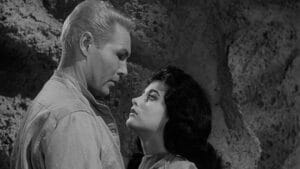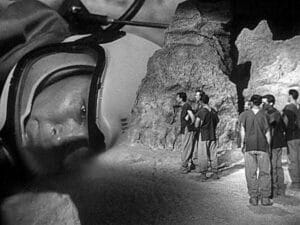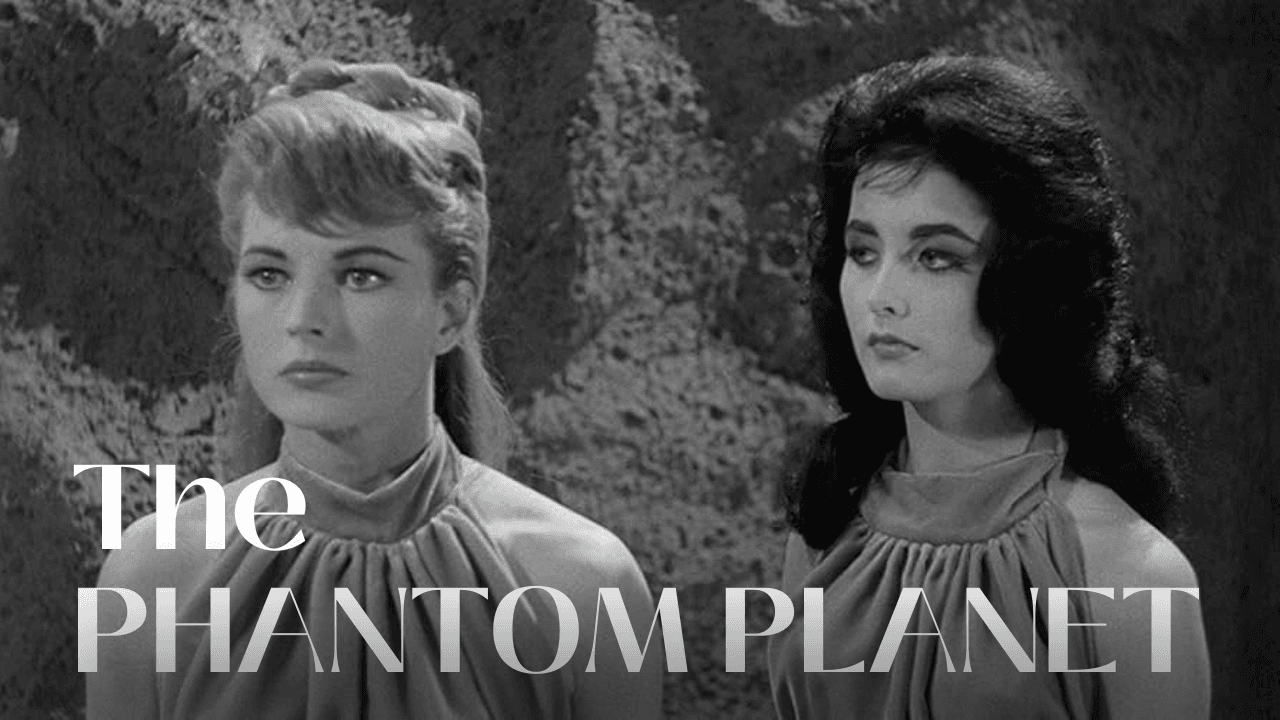A Nostalgic Dive into Retro Sci-Fi Cinema
Introduction: Journey to the 10th Planet

Classic sci-fi cinema holds a special place in the hearts of movie lovers, and The Phantom Planet (1961) is no exception. This film, directed by William Marshall, is a quintessential B-movie that embraces the charm of its era with a blend of interstellar adventure, otherworldly beings, and a surprisingly optimistic vision of humanity’s future. While it may not boast the high-budget spectacle of modern sci-fi epics, The Phantom Planet offers a nostalgic trip into an age when space travel was still a realm of pure imagination.
In this review, we’ll explore the film’s plot, themes, production design, and lasting impact on the sci-fi genre. We’ll also highlight its cast, including lead actors Dean Fredericks and Coleen Gray, whose performances bring this cosmic tale to life. Whether you’re a dedicated sci-fi enthusiast or a casual moviegoer looking for a cult classic, this deep dive will reveal why The Phantom Planet deserves a spot in your retro watchlist.
Plot Summary: Stranded Among the Stars

The story follows Captain Frank Chapman (Dean Fredericks), an astronaut on a mission to investigate mysterious cosmic disturbances. When his spaceship is damaged, Chapman crash-lands on an uncharted celestial body—The Phantom Planet. However, there’s more to this planet than meets the eye. Due to the planet’s unique gravitational force, Chapman is mysteriously miniaturized to the size of its native inhabitants, the Rhomans, a peaceful and technologically advanced humanoid race.
Chapman soon discovers the society of the Rhomans, their telepathic abilities, and their utopian way of life. The planet’s ruler, Sessom (Francis X. Bushman), welcomes him with a mix of curiosity and caution. However, Chapman also finds himself caught between two romantic interests—Liara (Coleen Gray), the compassionate daughter of Sessom, and the jealous, more aggressive Zetha (Alison Hayes).
But peace is fleeting. The Zoltan, a hostile alien species, threaten to invade the Phantom Planet, seeking its rich resources. Chapman must navigate complex alliances, prove his loyalty, and ultimately play a crucial role in defending his newfound home. As the battle unfolds, Chapman is faced with a choice: remain on the Phantom Planet or return to his own people.
Themes and Symbolism: More Than Just a B-Movie
1. Humanity’s Place in the Cosmos
Unlike many 1950s and 60s sci-fi films that centered on fear of the unknown, The Phantom Planet presents a more hopeful vision of interstellar coexistence. The Rhomans embody an advanced civilization that has embraced peace and technological harmony, contrasting with the aggressive and resource-hungry Zoltan. This serves as an allegory for Cold War tensions, reflecting the era’s anxieties and aspirations.
2. The Consequences of Isolation
Chapman’s journey highlights the struggle between integration and alienation. As an outsider, he must earn the trust of the Rhomans and adapt to their way of life. His initial resistance parallels the universal human fear of change, making his eventual acceptance a testament to the film’s underlying message of unity.
3. The Power of Choice
One of the film’s most compelling aspects is Chapman’s internal conflict. Torn between duty and a new sense of belonging, his decision to return home speaks volumes about human resilience and the pull of familiar connections.
Production and Special Effects: The Charm of Low-Budget Sci-Fi
1. Miniature Effects and Set Design
Given the film’s limited budget, its special effects rely heavily on practical techniques. The miniaturization of Chapman is achieved through simple yet effective optical effects. The set designs, though visibly modest, create an immersive environment reminiscent of other sci-fi classics of the era, such as Forbidden Planet (1956).
2. Costumes and Creature Design
One of the film’s standout elements is its alien costumes. The Rhomans wear sleek, futuristic outfits that reflect their advanced civilization, while the Zoltan are designed to appear more menacing. The practical effects, though dated, add to the film’s charm, giving it an authentic B-movie aesthetic.
3. Space Sequences and Cinematography
The space travel scenes, while not on par with later sci-fi masterpieces, showcase the ingenuity of filmmakers working with limited resources. The use of miniatures, painted backdrops, and practical explosions creates an engaging, if somewhat campy, cosmic adventure.
Cast and Performances
Dean Fredericks as Captain Frank Chapman
Dean Fredericks brings a grounded and charismatic presence to the role of Captain Chapman. Though his performance is occasionally stiff, he effectively portrays the classic sci-fi hero—brave, resourceful, and morally driven. Before The Phantom Planet, Fredericks was known for his role in the TV series Steve Canyon.
Coleen Gray as Liara
Coleen Gray delivers a compelling performance as Liara, the kind-hearted and intelligent daughter of Sessom. Gray, best known for her roles in Nightmare Alley (1947) and Red River (1948), adds depth to the film, making her character one of its emotional anchors.
Supporting Cast
-
Francis X. Bushman as Sessom – The wise and benevolent leader of the Phantom Planet.
-
Anthony Dexter as Herron – A rival suitor who distrusts Chapman.
-
Alison Hayes as Zetha – The aggressive and jealous potential love interest.
-
Richard Weber as Lt. Ray Makonnen – Chapman’s ill-fated co-pilot.
Legacy and Influence
While The Phantom Planet may not have achieved mainstream success upon its release, it has since gained a cult following among retro sci-fi enthusiasts. Its themes of unity, exploration, and human perseverance resonate with fans of classic space operas. Moreover, the film has been referenced in various pop culture outlets, including episodes of Mystery Science Theater 3000, where its campy charm was both celebrated and lovingly mocked.
Final Verdict: A Must-Watch for Classic Sci-Fi Lovers
If you enjoy old-school sci-fi with imaginative world-building and a touch of nostalgic charm, The Phantom Planet is a worthwhile watch. While its low-budget effects and dated dialogue may not appeal to everyone, the film’s heart and optimism make it stand out among 1960s B-movies.
Pros:
- Classic sci-fi adventure with an engaging storyline
- Unique themes that contrast with typical 1960s paranoia-driven narratives
- Memorable performances by Dean Fredericks and Coleen Gray
- Campy, yet endearing, special effects
Cons:
- Some stiff performances and pacing issues
- Dated visual effects compared to modern sci-fi standards
- Limited action sequences may not satisfy all viewers
Final Rating: 3.5/5 – A fun, nostalgic space adventure that deserves its place in sci-fi history.
Where to Watch
The Phantom Planet is available on various streaming platforms, public domain collections, and classic movie archives. For fans of vintage sci-fi, it’s an essential addition to your watchlist.
Join the Conversation!
Have you seen The Phantom Planet? Share your thoughts in the comments below! Don’t forget to subscribe for more classic film reviews and deep dives into retro sci-fi gems.



